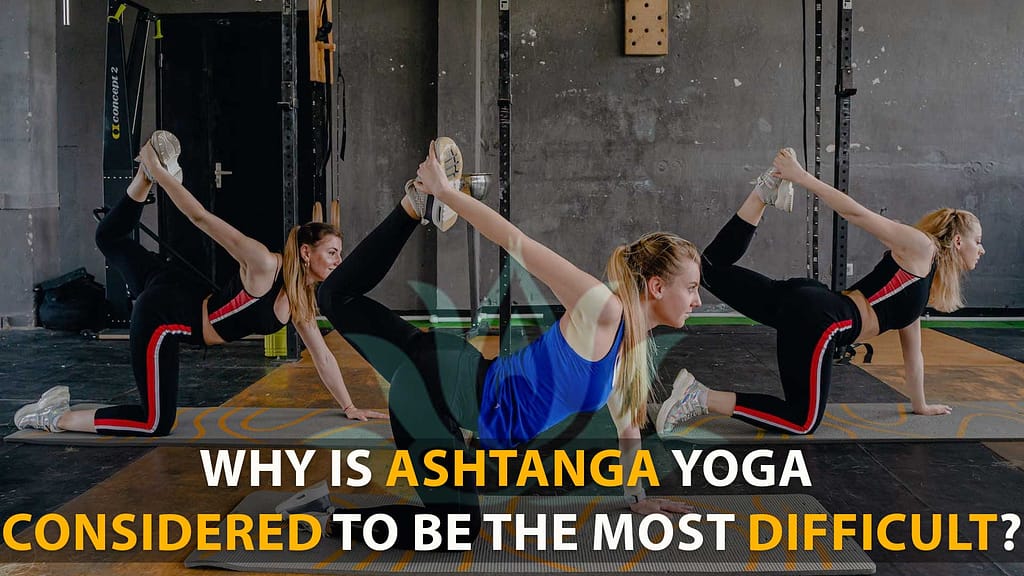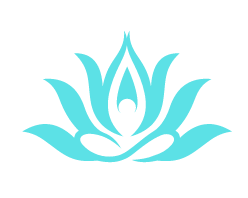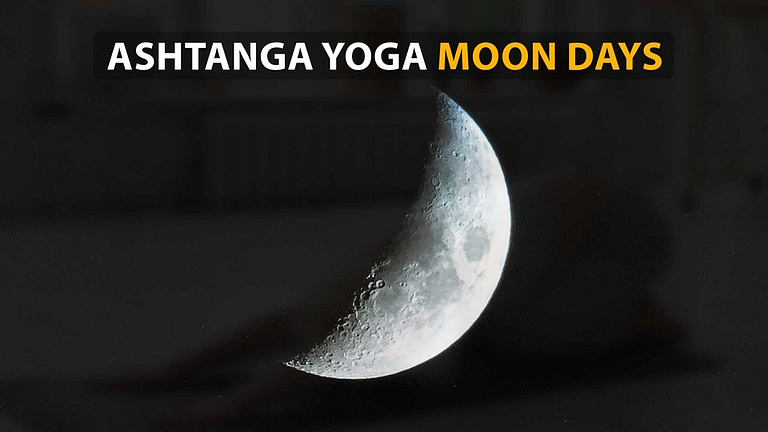Why Is Ashtanga Yoga Considered To Be The Most Difficult? – Complete Guide 2023

Why Is Ashtanga Yoga Considered To Be The Most Difficult?
Ashtanga yoga is challenging because the poses, called asanas, are complicated and hard to do. Many of the poses in the essential series are in this category. Ashtangis must also be great at vinyasa (moving), pranayama (breath control), and Drishti (focused look), in addition to asanas (poses).
Also, working on a sequence for weeks or even years is common. Ashtanga yoga contains a lot of failure and a strong will. The Entire Primary Series takes about 90 minutes to finish. This is longer than most yoga or exercise classes. In the usual way, you also have to practice six days a week, which can be tricky.
Serious practitioners of Ashtanga are encouraged to adopt specific lifestyle changes, including following a plant-based diet and engaging in early morning exercise. Not everyone can do Ashtanga Yoga. Still, it may be.
The Most Intense Form Of Yoga
Ashtanga is the most active and influential type of yoga. It is a steady flow of movement. This type of yoga, sometimes called vinyasa or power yoga, is popular among top athletes who want a more intense workout. Ashtanga makes the body hot so that it can get rid of waste.
Read:
Ashtanga Vs Hatha Yoga – Which Form Of Yoga Is Best In 2023
Things To Remember Before You Learn To Start Ashtanga

Here are a few things below that you must keep in mind.
1. Prepare To Be Unsuccessful
Something in the Ashtanga Yoga method is supposed to be challenging the first time you try it. This is part of the practice lesson. The way doesn’t make the practice easier; instead, it asks you to strengthen your mind.
Accepting your mistakes and learning to love yourself anyway is a skill that will help you throughout your life. You should feel stressed if this is your first time doing Ashtanga Yoga. After many years, it gets better!
2. Start Small And Work Your Way Up
Take on only what you can handle. As a beginner to Ashtanga Yoga, diving right into the Complete Primary Series might be appealing, but I’d suggest you start with only the Sun Salutations.
If you want to get motivated to practice by watching a Full Primary Series movie, follow the first part and observe as much as you want. Then, when you’re ready to end your practice, you can skip quickly to the last moves to finish.
Once you know how to do the fundamentals of the Sun Salutations, you can add the Stand Poses, and then the Sitting Poses until you’ve done the whole Primary Series.
3. Concentrate On The Breath, Quiet The Pose
The breath is where the true magic of the exercise happens. The link between the aware and subconscious minds is deep breathing with sound.
When you do Ashtanga Yoga, the poses are just ways to give yourself a chance to breathe. Once you start paying attention to your breath again, it doesn’t matter what poses you do or don’t do.
4. Check Out The Tutorials
It’s normal to feel overpowered by a pose.
Experts suggest that dedicated Ashtanga practitioners seek guidance from a trustworthy and trained instructor who can teach them about proper alignment and anatomical principles for a healthy practice.
Understanding how to think about the Asana method helps you learn how to work. It can turn a feeling of being useless into one of hope.
5. Understand Your Physique
Yoga is really about getting in touch with your body. You always need to improve your posture. When you train, your real goal should be to bring awareness to every cell in your body.
Once your body is genuinely overwhelmed with the limitless light of your inner awareness, you will realize who you are. This spiritual body awareness may occur in any pose, so there’s no need to try to do all the expert forms.
6. Don’t Compare Yourself To Other People

Making more yoga moves doesn’t make you an improved yogi. Obtaining additional postures is different from getting more and more problems. It’s all about what you do inside. Almost all yogis have trouble with the poses, but that’s how they learn.
Wherever you face an obstacle is where you start practicing yoga. If a person needs a more “advanced” pose to find what makes them unique, that’s their edge. Consider yourself lucky if you find your edge on the first breath of your exercise.
You don’t have to look for more challenging poses to get one of the most important benefits of yoga, which is kindness, which means suffering. What brings us together in yoga differs from how well we do but how hard we work. The more you get stuck in challenging poses, the faster your heart will start to open.
7. Study
Add some reading to your daily asana practice. Get the Ashtanga Yoga method’s essential books to learn more about how the course of yoga works. It will be simple to figure out how it works.
8. Surrender To The Process
You may feel like you want to do more postures besides the Sun Salutations and something more exciting and fun, but if you grow to embrace where you are and commit to the journey, you will get something better than any pose: peace.
When you understand you have nothing to show and are content to work and be right where you are, your heart changes, and you feel inner peace.
9. Don’t Force Or Push; Just Be
Even though it may be easy to grab your arms and push them into the shape of the postures, your body will suffer. Think peacefully about your body and do not strain or test yourself. Try to be with your body in a loving-kindness space. When you feel like forcing or pushing, don’t.
Never Give Up.
If you can’t go on, watch a movie that will inspire you. Get on your mat six days a week, even if it’s just for five minutes. Pat yourself on the back for every little step you make forward. Decide that you won’t give up, even when things seem challenging and overwhelming.
Read:
Does Yin Yoga Burn Calories? Benefits In 2023
Why Is Ashtanga Yoga So Hard For Beginners?

There’s no easy way to say this, but Ashtanga Yoga is, in fact, complicated. The more you train, the more you forget that the Primary Series is like a marathon. This can seem scary and discouraging for people who have never done yoga.
Mastering Ashtanga Yoga requires patience and focus. It takes a human being three years to learn it, so if you are in a hurry, prepare to wait and start Ashtanga Yoga.
This is why early Ashtanga learners become discouraged when they repeatedly fail. And then they abandon the practice. Although this should not be the case, hard work and patience bring success.
Poses Of Ashtanga Yoga
Standing Positions

- Utkatanasana Uneven pose
- Virabhadrasana (A & B) Warrior position
- Surya Namaskara (A & B) Sun greeting
- Samasthiti Standing still
- Padangushtasana Pose with the thumb on the foot
- Pada hastasana Hand-to-foot position
- Utthita Trikonasana Triangle pose for a long time
- Parivritta Trikonasana Long triangle pose with a twist
- Utthita Parshvakonasana Long-held side-angle pose
- Parivritta Parshvakonasana Turned, long sideways angle pose
- Prasarita Padottanasana (A, B, C & D) Stretching pose with feet spread out
- Parshvottanasana Stretching pose from the side
- Utthita Hasta Padangushtasana Triangle pose for a long time
- Ardha Baddha Padmottanasana The half-bound lotus stretch
Read:
What Is Special About Ashtanga Yoga? – 14 Benefits Of Ashtanga Yoga
Sitting Positions

- Ardha Baddha Padma Paschimattanasana Purvatanasana is half lotus forward pose.
- Dandasana (Chaturanga Dandasana) is the West-Back (extended-intense) stretching pose.
- Four-Legged Staff Poses. “Staff” is a term for back and body support.
- Trianga Mukhaekapada Paschima With one foot turned backward and looking forward, stretch
- The Paschimattanasana West-Back Stretching Pose is a long, powerful stretch.
- Urdhva Dhanurasana Bow pose from up high
- Setu Bandhasana is a pose that looks like a bridge.
- Urdhva Mukha Paschimattanasana
- Stretching forward while looking up
- Kukkutasana Roster pose
- Ubhaya Padangushtasana All fingers to toes pose
- Baddha Konasana
- Pose at a right angle
- Upavishta Konasana is Sitting at an angle
- Supta Padangushtasana Lateral sleeping position with a thumb on foot
- Supta Konasana Sleeping angle pose
- Bhujapidasana Arm pressure pose
- Kurmasana Tortoise pose
- Supta Kurmasana Sleeping tortoise pose
- Garbha Pindasana Pose of an embryo in the belly
- Marichya pose means “ray of light (from the sun or moon).”
- Marichyasana (A, B, C & D)
- Janu Shirshasana (A, B & C) From head to knee
- Navasana Boat pose
Finishing Positions

- Baddha Padmasana Bound lotus pose
- Uttana Padasana Shirshasana is the extended foot pose.
- Uth Pluthi (Tolasana) raised the Shavasana Corpse pose (Shavasana).
- Yoga Mudra Yoga move
- Head-on-the-ground pose
- Padmasana Lotus pose
- Karnapidasana Ear strain poses
- Urdhva Padmasana Elevated lotus pose
- Salamba Sarvangasana All arms pose
- Matsyasana Fish pose
- Halasana Plow pose
- Pindasana Embryo pose
The Most Difficult Asana In The Ashtanga Primary Series
Supta Kurmasana is a challenging pose that can take a lot of people years to get into. This is said to be one of the most challenging Ashtanga yoga poses, and you should only do it with the help of a skilled teacher.
Read:
Does Ashtanga Yoga Help You Lose Weight? – A Comprehensive Analysis In 2023
Ashtanga Yoga Requires Time

Your first practice might only last 15–20 minutes. But if you want to learn all the asanas in the main series, you should spend more than an hour as soon as possible. Also, people who want to do yoga need a realistic plan for the lessons since you can’t just start doing Ashtanga whenever you want.
Each Ashtanga asana has strict rules about breathing, like keeping a pose and breathing at the right time. Ashtangis must also use correct drishti (focused gaze) in all forms during a lesson. This rule also works for the changes in vinyasa.
So, when you practice, you must train your body, breathing, and mind or awareness to focus. It’s easier to keep track of so many things if you’re in a hurry, be in the right frame to give your all to the asanas.
Conclusion
Ashtanga yoga is demanding from the start, and as you get better, it gets more complicated and more satisfying. Whether or not you should live the Ashtanga way rests on your goals. No one can turn into an Ashtanga, but people who do Ashtanga get solid and happy.
Always remember that everyone has a different body, and everyone’s yoga exercise is also extra. But as you move from the main sequence to the secondary series and beyond, the poses get more complex physically and in terms of energy.
FAQs
What Is The Hardest Ashtanga Pose?
Yogis say that Handstand is the most challenging yoga pose, and spreading your legs makes it even harder.
Which Approach To Yoga Is Considered To Be The Most Difficult?
Some types of yoga, like Ashtanga and Bikram, are more complicated than others, like Hatha.
What Is Harder, Ashtanga Or Vinyasa?
Ashtanga yoga is more difficult because its pace is faster. This type of yoga is planned out and has a set order for moving from one pose to the next. People say Vinyasa yoga is harder on the body than the other two styles.
Who Shouldn’t Practice Ashtanga Yoga?
If your shoulder hurts or your knee, in some way., you shouldn’t do this type of yoga. Pregnant women should avoid practicing Ashtanga yoga or any vigorous physical activity
Read Also
- What Is The Ashtanga Yoga Of Patanjali? A Comprehensive Guide In 2023
- Ashtanga Opening And Closing Mantra – Complete Guide 2023
- Ashtanga Vs Hatha Yoga – Which Form Of Yoga Is Best In 2023
- Ashtanga Yoga Moon Days – How Can We Calculate Moon Days In 2023?
- How Yoga Can Help You Live A Happy Life?
- Can Ashtanga Yoga Build Muscle? – Myth Or Reality? 2023






